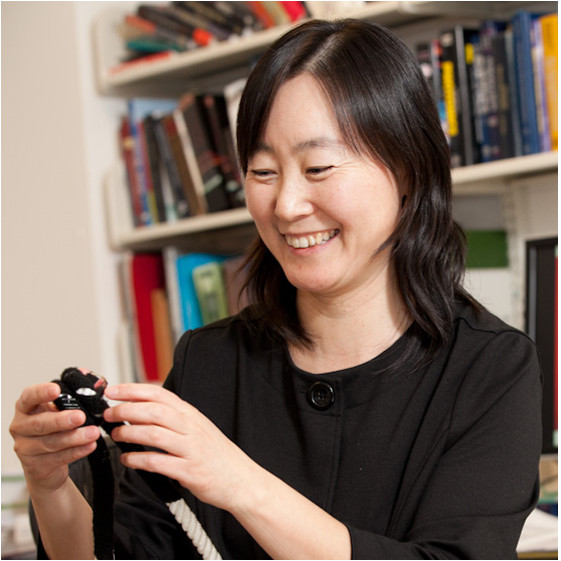
Dr. Michelle Wang is a James Gilbert White Distinguished Professor in the Physical Sciences, a Professor of Cell & Developmental Biology, a Howard Hughes Medical Institute Investigator, and a Member of the National Academy of Sciences.
Dr. Wang is recognized for pioneering optical trapping techniques to study DNA mechanics and topology in fundamental processes. She received a B.S. in Physics with a concentration in Nuclear Physics from Nanjing University and a Ph.D. in Biophysics from the University of Michigan at Ann Arbor. During her postdoctoral work at Princeton University, she and colleagues performed landmark experiments to enable optical trapping for tracking and stalling RNA polymerase and contributed to the inception of the single-molecule field. In 1998, she joined the Department of Physics at Cornell University, where her lab invented the angular optical trap (AOT), the DNA unzipping mapper and staller, and the nanophotonic standing-wave array trap (nSWAT). Using these techniques, her lab has performed landmark experiments and made technological breakthroughs that have changed the research landscape and understanding of the impacts of topology on essential cellular functions.
She is a member of the Field of Physics, the Field of Applied and Engineering Physics, the Field of Electrical and Computer Engineering, the Field of Biophysics, the Field of Biochemistry, Molecular and Cellular Biology, and the Nanobiotechnology Center. Since joining Cornell, Dr. Wang has actively pursued interdisciplinary research through collaborations with a large number of faculty on and off campus.
Dr. Wang was the first Howard Hughes Medical Institute Investigator at Cornell University’s Ithaca campus. She has received numerous other awards, including the Keck Foundation Distinguished Young Scholar in Medical Research Award, the Beckman Young Investigator Award, the Alfred P. Sloan Research Fellow Award, and the Damon Runyon Scholar Award. She is also an elected Fellow of the Biophysical Society and the American Physical Society.
The helical nature of DNA dictates that translocating motor proteins will necessarily have to rotate DNA, resulting in an intricate coordination of cellular machinery during fundamental processes. This topological complexity has presented significant barriers to experimentation. The Wang lab investigates the impacts of DNA mechanics and topology by developing state-of-the-art (and often one-of-a-kind) instruments to directly and precisely measure molecular extensions, forces, rotations, and torques. Using the angular optical trap (AOT), which allows direct measurements of torque and rotation, the Wang lab measured the torque RNA polymerase can generate during transcription. When combined with Dr. Wang’s earlier work, this accomplishes the first measurements of the force and torque of any DNA-based motor. The Wang lab has also discovered a novel role of chromatin in eukaryotic DNA replication – chromatin’s torsional mechanics limit daughter strand intertwining, thus facilitating chromosome segregation. In addition, the lab’s technical innovation has led to numerous other powerful methods, notably the DNA unzipping techniques and nSWAT – the first on-chip nanophotonic platform for simultaneous and precise manipulation and measurements of biomolecules. The work of the Wang lab removes long-standing experimental barriers, broadens the utility of optical trapping, and reveals new and unexpected mechanistic insights into the broad impacts of topology.
Ithaca

Ithaca is a small city on the southern shore of Cayuga Lake in the Finger Lakes region of Central New York State. Cornell University and nearby Ithaca College stand on two hills overlooking the downtown region. Ithaca is culturally liberal with a strong sense of community and a vibrant artistic scene, as well as a strong intellectual and educational focus. Residents celebrate their community through several annual festivals in parks and on the downtown pedestrian Commons. Ithaca is a walkable and bike friendly city with excellent public transportation. The surrounding mountains, lake, waterfalls, and forests offer a wide variety of outdoor opportunities for recreation.
